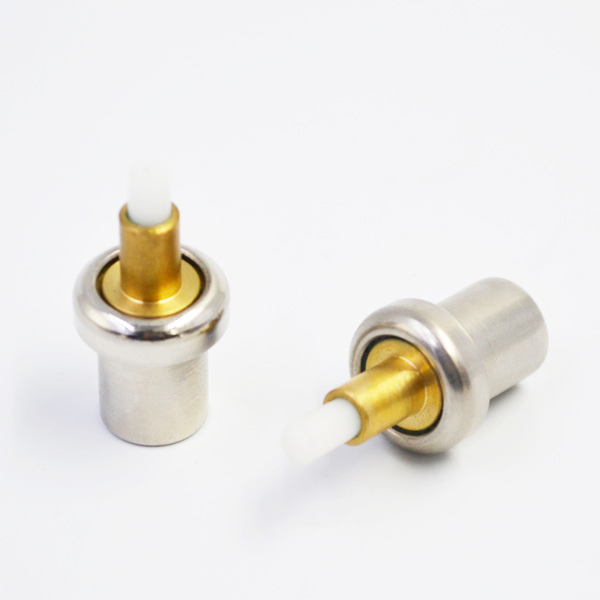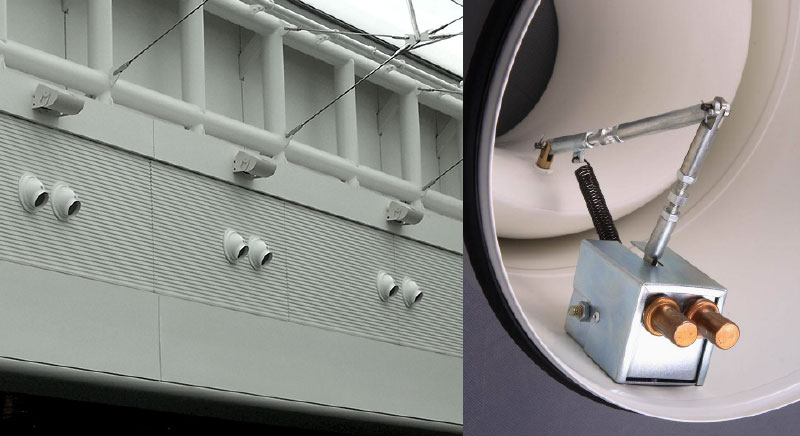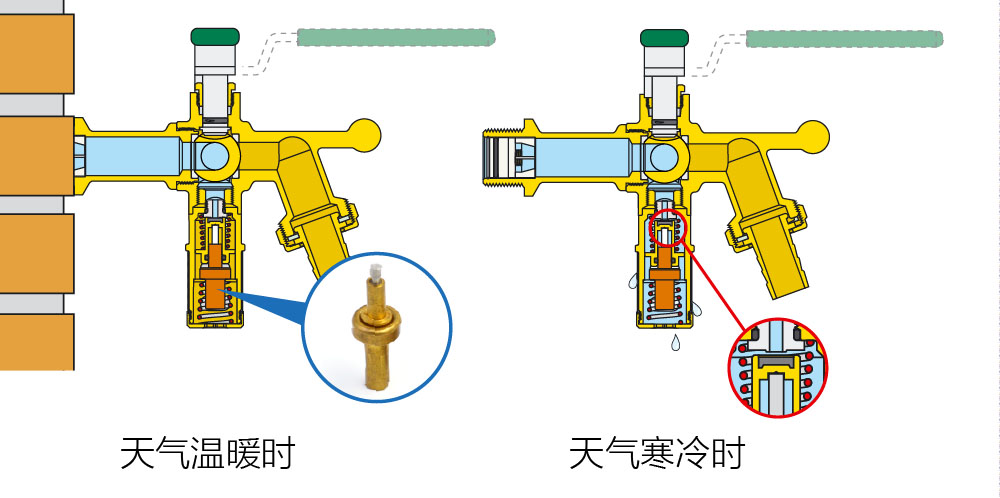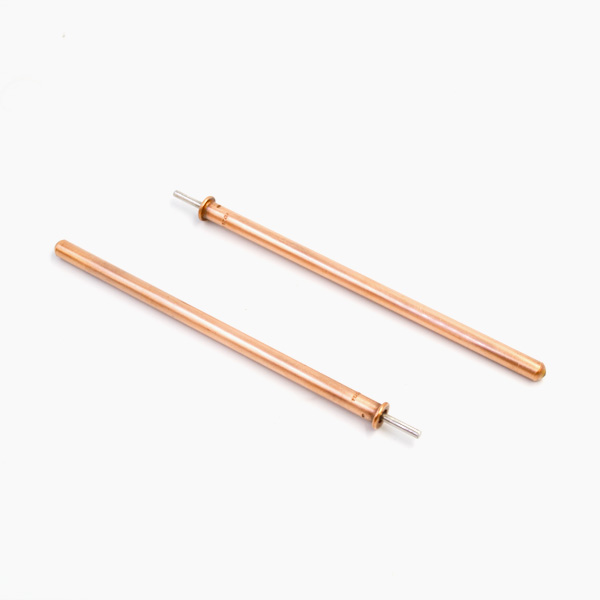Aiming at a parallel AMT (automatic mechanical transmission) hybrid electric vehicle, the hardware design of vehicle controller based on 32 bit microprocessor MPC5634 is introduced. The design principle and PCB wiring method of main hardware modules such as power supply circuit, input circuit and drive circuit are described in detail. The hardware-in-the-loop simulation test is carried out by using dSPACE. The results show that the designed controller can achieve the desired function. Hybrid Electric Vehicles (HEV) integrates the advantages of pure electric vehicles such as high efficiency, low emission and long driving distance. It is very helpful for energy saving and emission reduction. It is favored by domestic and foreign enterprises. It is an energy-saving vehicle that can realize large-scale commercialization, such as Toyota Prius, Chevrolet Volt, BYD Qin, etc. Vehicle type. The key technologies of hybrid electric vehicle mainly focus on vehicle system integration and vehicle control. At present, there are many literatures on control strategies, but few on the development of controllers to achieve control strategies. The stable and reliable operation of the hardware part of Hybrid Electric Vehicle Control Unit (HCU) is the prerequisite for the good implementation of the control strategy. HCU receives various forms of external signals and converts them into information that can be recognized by control strategy. The control strategy obtains control commands after complex operations on the controller microprocessor. The control commands are executed by the controller driving circuit or transmitted to other control units through the communication circuit. Therefore, HCU is the core component of the whole control system, which is called the “brain” of the vehicle control system. In addition, HCU works in the vehicle environment with high current, high voltage and high radiation. The hardware part should have good anti-interference ability [1-3].

In this paper, the characteristics of the microprocessor are introduced. The minimum system, power supply circuit, analog circuit, digital circuit, frequency circuit and communication circuit are designed.
This research is aimed at a parallel AMT hybrid electric vehicle. The forward model mainly includes four key components: engine, AMT, motor and power battery, as shown in Figure 1. Parallel AMT hybrid electric vehicle adopts typical single-axle parallel structure: motor rotor and transmission input shaft are fixed, motor housing and transmission housing are fixed, and the engine and transmission are flexibly connected by dry clutch. The power of transmission output shaft is transmitted to the wheel through differential and transmission half-axle. Controller Engine Electronic Control Unit (ECU), Transmission Control Unit (TCU), Micro Controller Unit (MCU) and Battery Management System (BMS) communicate with HCU through CAN bus. HCU not only has strong computing and storage capabilities, but also receives a large number of input signals and controls related execution devices. As shown in Figure 2, the main components of HCU associated with external circuits are input signal processing circuit, relay driving circuit and communication circuit. Input signal is divided into analog, switching and frequency; HCU only drives air conditioning compressor relay and main relay related to energy management; communication circuit mainly uses CAN communication, CANA communication circuit is responsible for information exchange with other control units, and CANC communication circuit communicates with upper computer. The calibration software INCA used in this study communicates through CANC circuit. The main control chip of HCU designed in this study is Freescale MPC5634M. The chip is a 32-bit high-performance microprocessor chip based on PowerPC architecture. It is specially designed for traditional fuel engines, hybrid electric vehicles and automatic transmission. It has the characteristics of low power consumption, high frequency, large storage capacity and high integration. At the same time, the internal Flash of the microprocessor is as high as 1.5 M, which can fully meet the needs of data storage and program storage in complex control systems. SRAM of 94 KB can set up a large number of scaling quantities to facilitate data calibration in R&D projects [4]. In addition, the most important point is that many development platform design companies have designed automatic code generation tools for this microprocessor, which can greatly shorten the development cycle. In the formula, Vdata is the binary result of AD conversion; Vin is the actual voltage to be converted; VRH is the high potential of the reference voltage; VRL is the low potential of the reference voltage. Therefore, a stable VRH-VRL is the prerequisite for obtaining the correct conversion results. If the VRH-VRL fluctuates greatly, even if there is a stable input voltage Vin, the stable conversion results can not be obtained. Nearby. In order to reduce the impact of electromagnetic interference, parallel capacitors of each microprocessor power supply pin are used to filter clutter. It is recommended that 5 V power supply be connected in parallel with 1 uF and 0.01 uF capacitors to eliminate high and low frequency interference, while 3.3 V power supply is connected in parallel with 10 uF and 220 nF capacitors [5]. Power supply module is an important part of vehicle controller. Its performance will affect the stability and reliability of the whole hardware circuit.

A good power supply module should bring reliable power supply to each module of the system, at the same time, reduce the interference and improve the robustness and stability of the whole system.
When designing the power circuit of the system, the factors such as power consumption, cost and volume of the system should be considered comprehensively. Three types of power supply are commonly used in MPC5634M, including 5.0V, 3.3V and 1.2V. In this study, Infineon’s TLE7368 power supply chip is used. The chip provides a 5 V digital power supply for the microprocessor and two 5 V analog power supply for the external sensor. In addition, a 3.3V power supply is provided to meet the requirements of microprocessor 3.3V power supply. The design is based on the recommended circuit of TLE7368 manual, as shown in Figure 3. It should be noted that the use of one-way secondary transistor to prevent power supply reverse connection on the circuit damage, the use of TVS transistor to make the voltage clamp of the back circuit to 25 V, protect the back voltage circuit. Signal acquisition circuit is the main source of controller interference, so this part of the circuit needs to design a better filter circuit to reduce interference. The signal acquisition circuit of the vehicle controller designed in this study mainly includes analog, switching and frequency. The analog signals include brake pedal and throttle pedal signals, whose opening value represents driving intention.

The analog signals after introducing interference will have signal jump, and the control strategy is likely to be misjudged. The three analog signal input ranges from 0 to 5 V, and the three analog signal processing circuits are exactly the same, as shown in Figure 4. FB3 is a magnetic bead, which reduces the input of high frequency interference by using the characteristics of resistance high frequency and low frequency. Resistance R64 mainly plays the role of voltage divider, usually takes a larger value to reduce the distortion of input signal voltage caused by the access of the later circuit. C63, R63 and C62 constitute a typical PI-type filter circuit, which further filters the introduced interference. At the same time, R63 has a current limiting effect to prevent the high current generated by misconnection of high voltage from harming the circuit. D20 is BAT54S. Its function is the same as that of two unidirectional diodes in series. If the input voltage is less than 0 V, the lower diode is turned on and the voltage rises to 0 V. If the input voltage is greater than 5 V, the upper diode is turned on and the voltage falls to 5 V, thus ensuring that the output voltage clamp is 0-5 V.
The switching interval between the high and low levels of the switching circuit is relatively large, and the possibility of misjudging the high and low levels caused by interference is very small. The circuit can be designed relatively simply. In most cases, thermostatic element the switching signal voltage is equal to the battery voltage, so it is necessary to design a voltage dividing circuit to control it below 5V. Resistors R52 and R54 as shown in Fig. 5 constitute a voltage dividing circuit. Resistors R52 and R54 can be adjusted according to different situations to suit different voltage input signals. Resistors R52 and capacitors C57 constitute common RC filter circuits. D15 acts as described above. Frequency is mainly the speed signal. Hall sensor is used in the speed sensor. According to the rotation of the speed signal disc, a 12 V square wave signal of a certain frequency is generated. Its period changes with the change of the speed. The microprocessor can calculate the vehicle speed by measuring the high level time of the microprocessor through eTPU or eMIOS module, or by measuring the number of pulses received per unit time. The RC filter circuit used in this study also obtains good test results. As shown in Figure 6, in order to enhance the universality of the circuit, the speed signal is pulled up to 12 V by 2 K resistance, divided to 5 V by R83 and R109, and then filtered by RC circuit. It should be noted that the cut-off frequency of C79 is calculated according to the cut-off frequency of RC circuit. The cut-off frequency is related to the maximum speed, the radius of wheel and the number of pulses per turn. In this design, the sensor outputs four pulses per turn of the wheel. The maximum speed is 200 km/h and the radius of the wheel is 0.282 M. The maximum frequency can be calculated and multiplied by the safety factor. Finally, the capacitance is determined to be 1 nF and the cut-off frequency is 2 342 Hz. In this study, the main driving components are the relay of air-conditioning compressor and the relay of main power supply. The essence of the relay is inductance coil. Its absorbing current varies according to the type.
Usually, it is only tens of milliamperes, and its power is relatively small. Generally, both MOS and tertiary transistors can be driven.

When the driving circuit is switched on and off, the coil will generate high inductive electromotive force. If not processed, it is likely to break down the driving chip or even the microprocessor, and usually add a continuous current diode in the circuit. Low side drive is often used to drive relays in automobiles, but the way of continuous current diode is not convenient to realize. This research adopts NUD3124 driver chip developed by Ansenmei Semiconductor Company. This chip is a special relay driver chip. As shown in Figure 7, it integrates current limiting resistor and MOS transistor, and has the function of continuous current, which satisfies the drive of relay better. The designed communication circuit only uses CAN bus communication mode. Although FlexCAN module is integrated in MPC5634M, it can not directly realize CAN communication, because FlexCAN module only realizes the encoding and decoding of data to be transmitted logically. If normal communication is realized on CAN bus, additional CAN bus driver is needed to realize the physical connection between modules. The CAN communication circuit is shown in Fig. 8. The driver chip uses Bosch CF160CAN. The chip provides differential transmission capability for the signal to be transmitted in the CAN module, and parses the received differential signal. Common-mode inductor ACT45B can restrain electromagnetic wave radiation from high-speed CAN signal line [6]. Mmbz27valq semiconductor chip is connected to canh and canl transmission lines. Two TVs are integrated in the chip, which can provide ESD protection and surge pulse protection for CAN bus.

In order to prevent signal reflection between cables and achieve terminal matching, the terminal resistance of 120_is connected in parallel at the end [7]. Considering the density and cost of components, the Printed Circuit Board (PCB) of vehicle controller is designed with four layers. Core components should be arranged first, and analog signals should not be arranged around crystal oscillator circuits. Analog and digital electricity are separately arranged. Power supply or high-power devices are best arranged on both sides of PCB, which is conducive to heat dissipation. The filter capacitor of the input signal is placed near the connector as far as possible, so that the interference introduced inside the PCB board will be less. Circuits with larger current should be relatively thick, and circuits with higher frequency should be as far away from analog circuits as possible, and keep a certain distance from adjacent routes.
The signal lines of adjacent layers should be as vertical as possible to avoid parasitic capacitance. The decoupling capacitor is located near the chip voltage pin as far as possible. The shorter the loop formed by power supply, ground and decoupling capacitor, the stronger the anti-interference ability. The whole vehicle model and component model of hybrid electric vehicle are downloaded to the real-time hardware platform of dSPACE to simulate the real application environment of vehicle controller. The main functions of HCU signal acquisition and processing, communication and control strategy execution are tested, and the correctness of HCU is verified. In order to simulate the real application environment of HCU as much as possible, the whole vehicle designed in this paper
